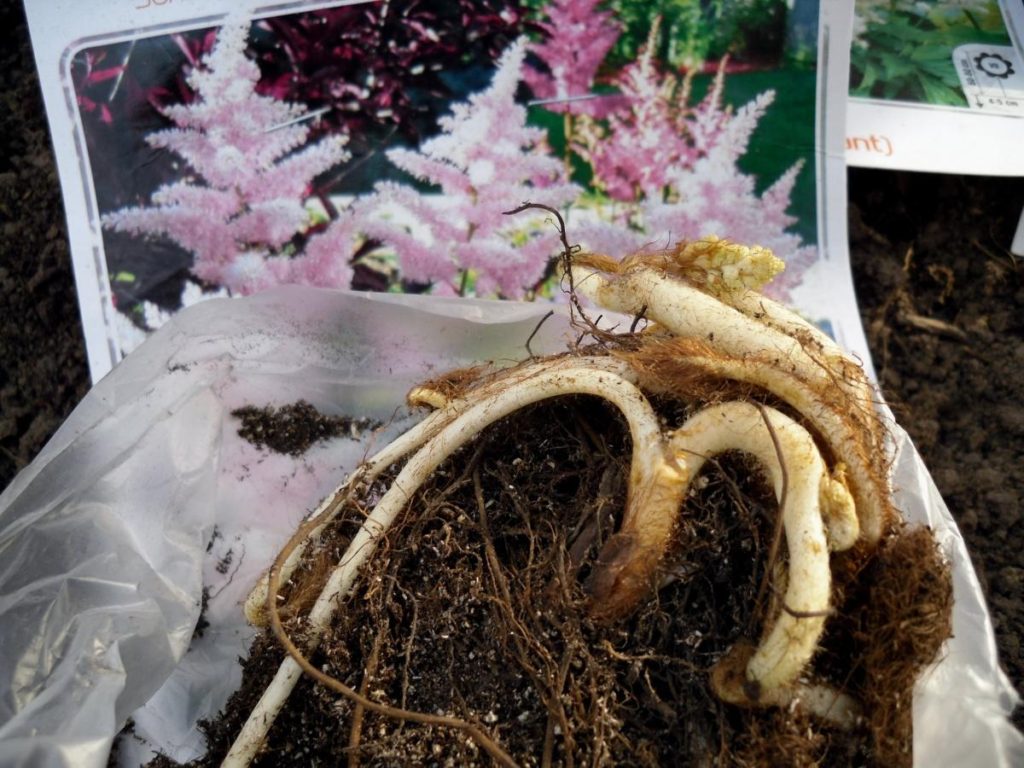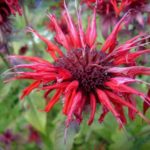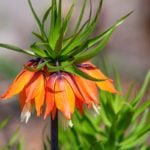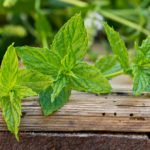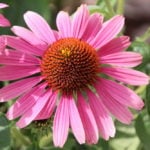Astilba is a plant that is deservedly loved by many gardeners not only for its exceptional beauty, but also for its simplicity, the ability to grow in the shade, where other plants are uncomfortable. In this article, I want to focus on the nuances of planting and the choice of planting material.
What you see in the picture is an example of seedlings that can be obtained by mail: during transportation, the sprouts lengthen, and because they are in unfavorable conditions, they also bend incredibly. In fairness, it should be noted that in shopping centers, their appearance is no better. Often, shoots and young leaves dry out or even rot if the substrate is wet.
Therefore, if possible, you should purchase the planting material as early as possible — perhaps it will go on sale in the spring and will be stored in the refrigerator until planting. When choosing, give preference to those rhizomes that have fresh, short and strong sprouts:
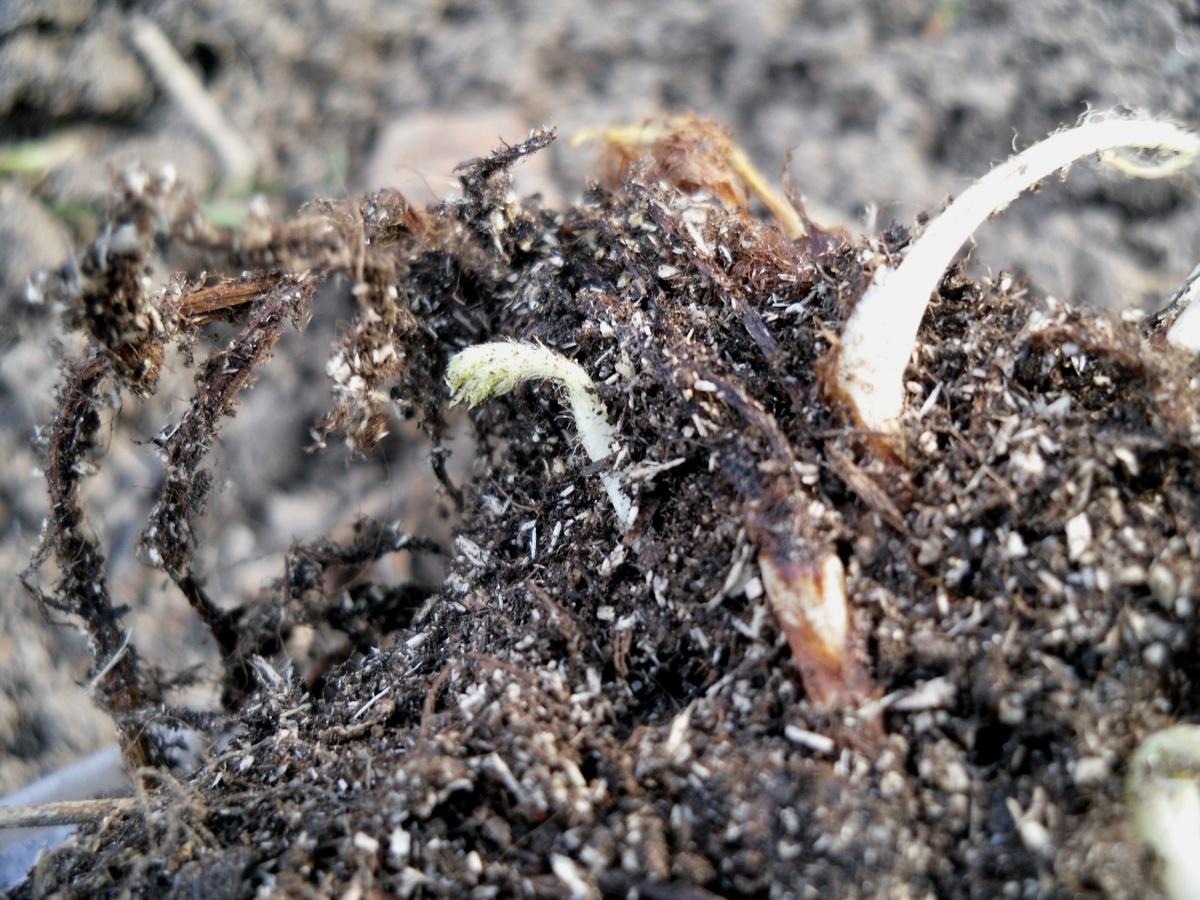
In order for Astilba with long shoots to start-it is necessary that the rhizome is large, not spoiled, not rotten and not dry. But such a plant, taking root in the first year, can be quite weak and not very beautiful.
The landing site is chosen in partial shade: Astilba will not survive well in the sun. It is desirable that the ground is moist; if there is a site with a high location of groundwater-the Astilba plant will be grateful. A light drought can withstand, perhaps, only Astilbe chinensis — it is contraindicated for the rest.
Make the planting hole so deep that the rhizomes lie freely in it. In the soil when planting, it is necessary to lay organic fertilizer:
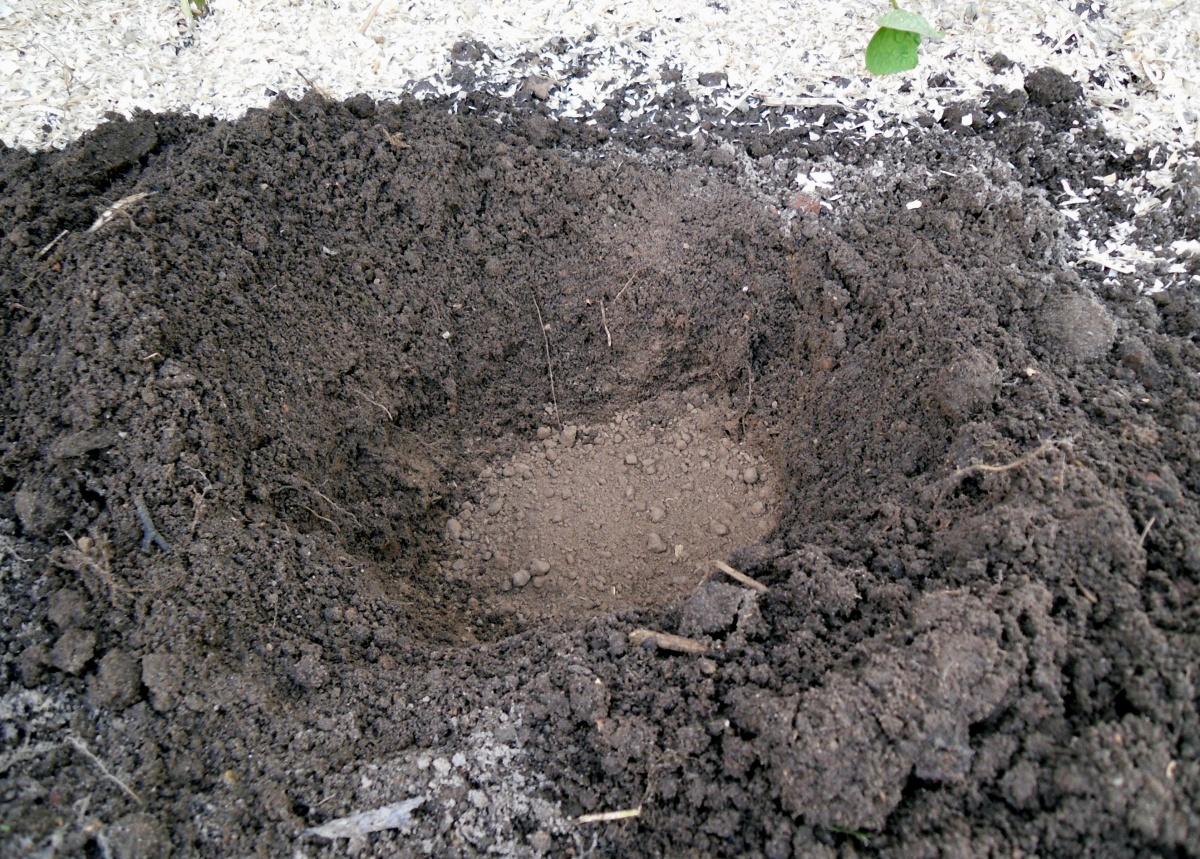
Since the soil of my garden is sandy, poorly moistens each planting hole, I generously added hydrogel to it:
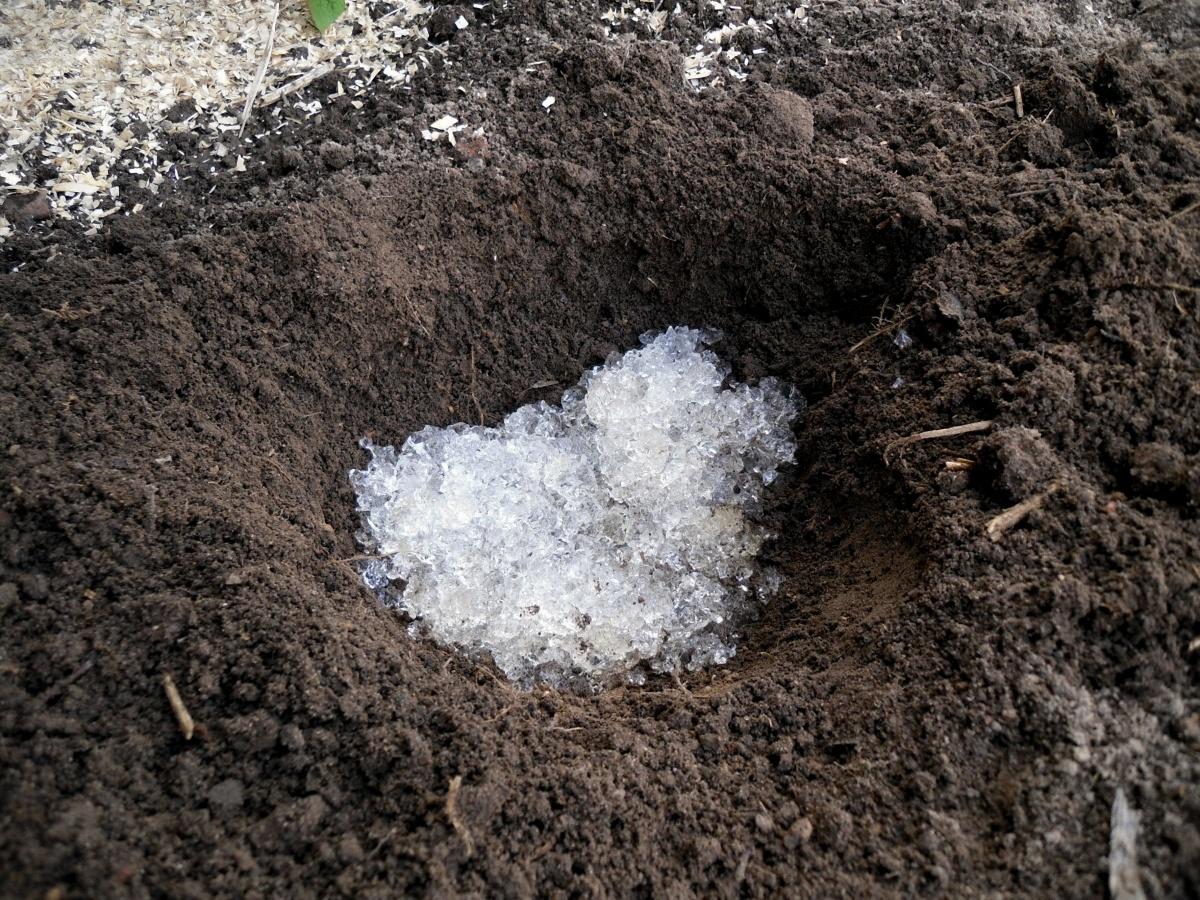
In the prepared pit, place the rhizome. If you bought plant material in pots, then it is recommended to water such seedlings before transplanting.
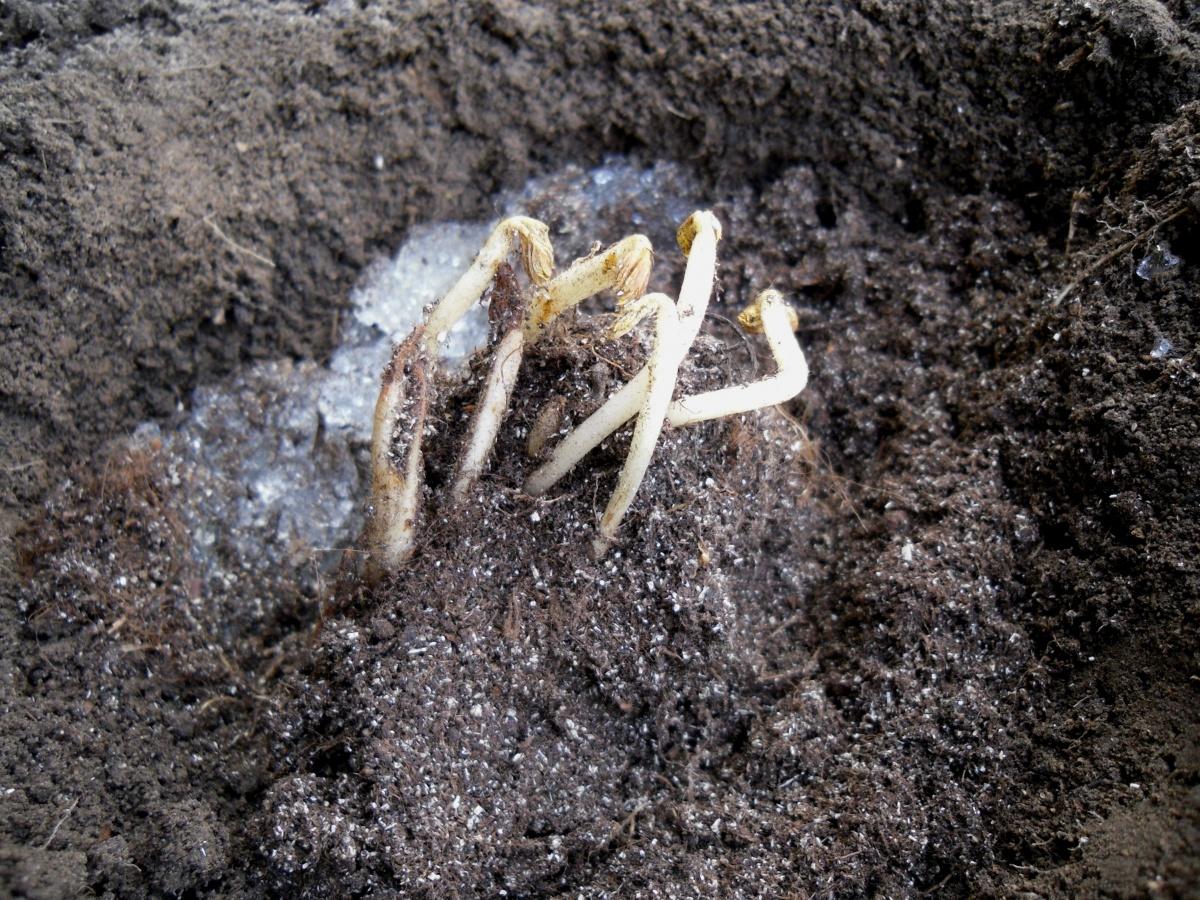
Then fill it with soil, compacting it around the roots. If the seedling was in a pot, plant it at the same depth at which it grew. If the rhizomes are planted, then do not bury them: the base of the shoots should be at the same level with the soil surface. Do not forget that after watering the soil may settle, make sure that the roots do not stick out of the ground.
A watering circle is formed around the plants, so that no moisture remains that would not spread:
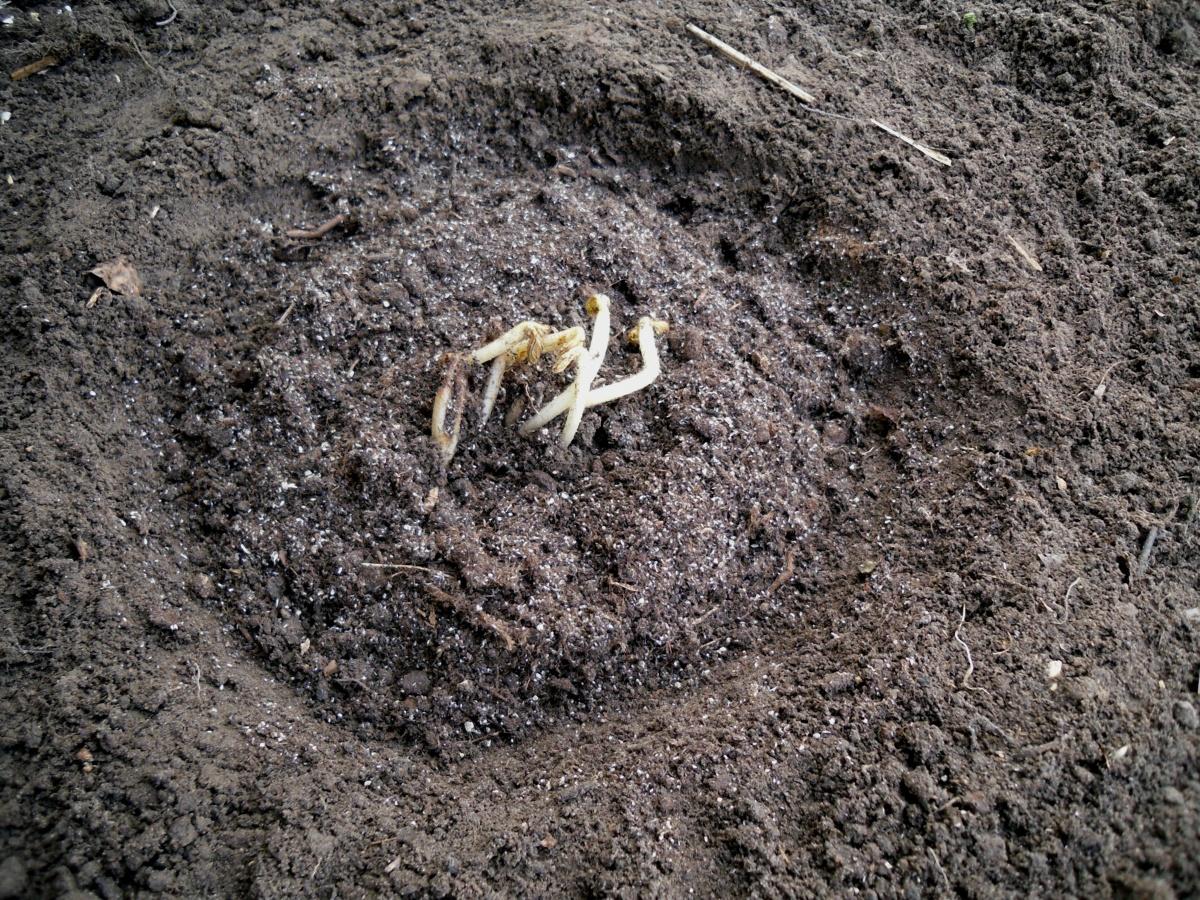
Astilba was planted abundantly. If the weather is dry, the planting will need to be watered at least every other day until the plants take root.
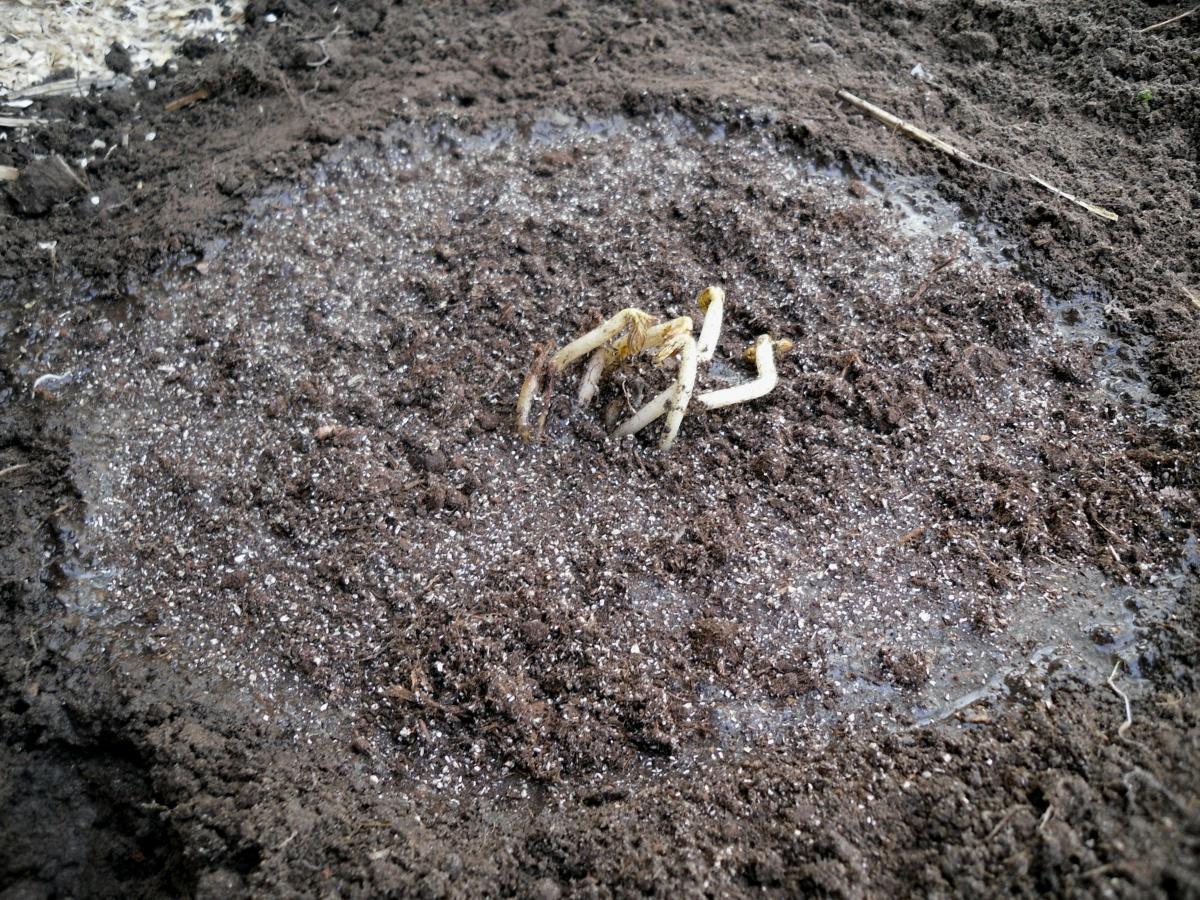
When the water is absorbed, mulch the soil well and place a label with the name of the variety. When mulching, do not proceed to fill in the sprouts, leaving a little free land around them. The rest of the space is liberally sprinkled with crushed bark or sawdust, compost.
If you are planting groups of astilba (which is how they look better), leave the distance between the plants from 40 to 50 cm (1.3-1.6 inch) and be sure to take into account the height of each of them: in different varieties, it ranges from 50 to 120 cm (1.6-3.9 inch).
